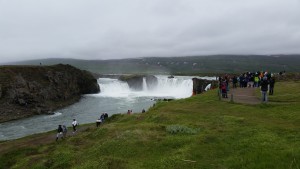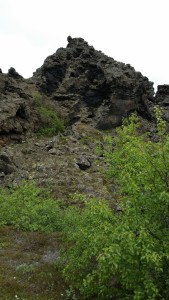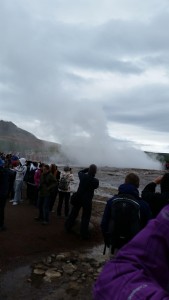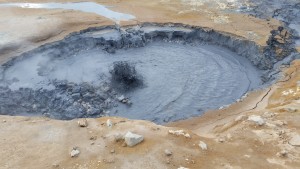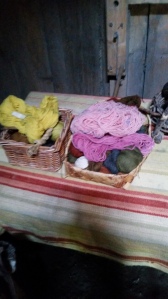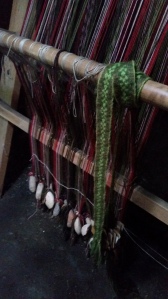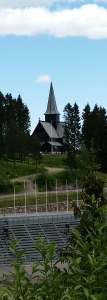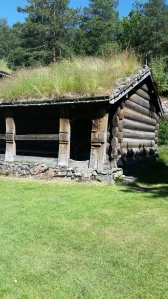Iceland is a beautiful country. Very dramatic with steep mountains, volcanoes and then lakes and streams with waterfalls.
Iceland is a geothermal country and is growing – slowly. Volcanoes are a big part of the landscape. We saw the volcano that erupted in 2010 (I can neither pronounce nor spell the name) and stopped air traffic over Europe. The lava formations do indeed look like trolls, which are huge in the mythology.
The scale of the image does not show how enormous this outcropping is.
Because of the this activity, all the energy is geothermal. And signs of the geothermal activity are everywhere.
This one is at geysir – yes, folks, geyser is an Icelandic name. Another feature is the boiling water and mud that one can see everywhere
Iceland was very green, with snow on the higher peaks. But it is too cold to grow many things so most of the produce – that is not imported – is grown in greenhouses. Here, even a degree or two can make a huge difference.
We bought more sweaters.
One interesting feature: the livestock. Almost feral horses that are thickly covered with hair. Cattle that are a very old breed (Iceland has strict laws on importing livestock since they want to keep their breeds pure). The cattle look very different from our modern cows. They are horned with long pointed horns, for one thing, and instead of a barrel shape their bodies hang from their prominent hips as though the flesh was on a coat hanger.
And there are more sheep than people: sheep everywhere.
I loved Iceland but I don’t think I could take the cold climate. And, in the north, we had almost 24 hours of day. I cannot imagine coping with 24 hours of night.

